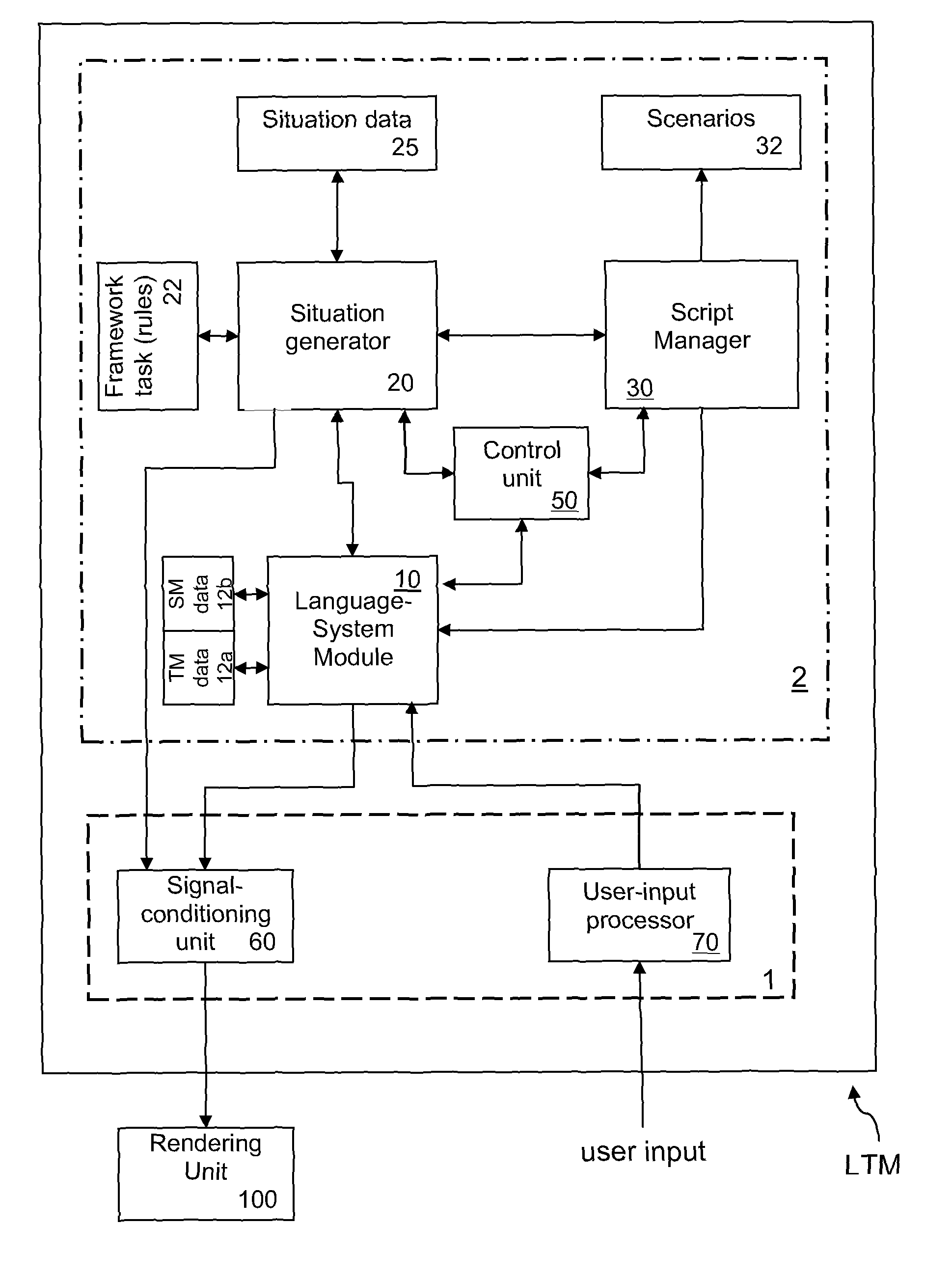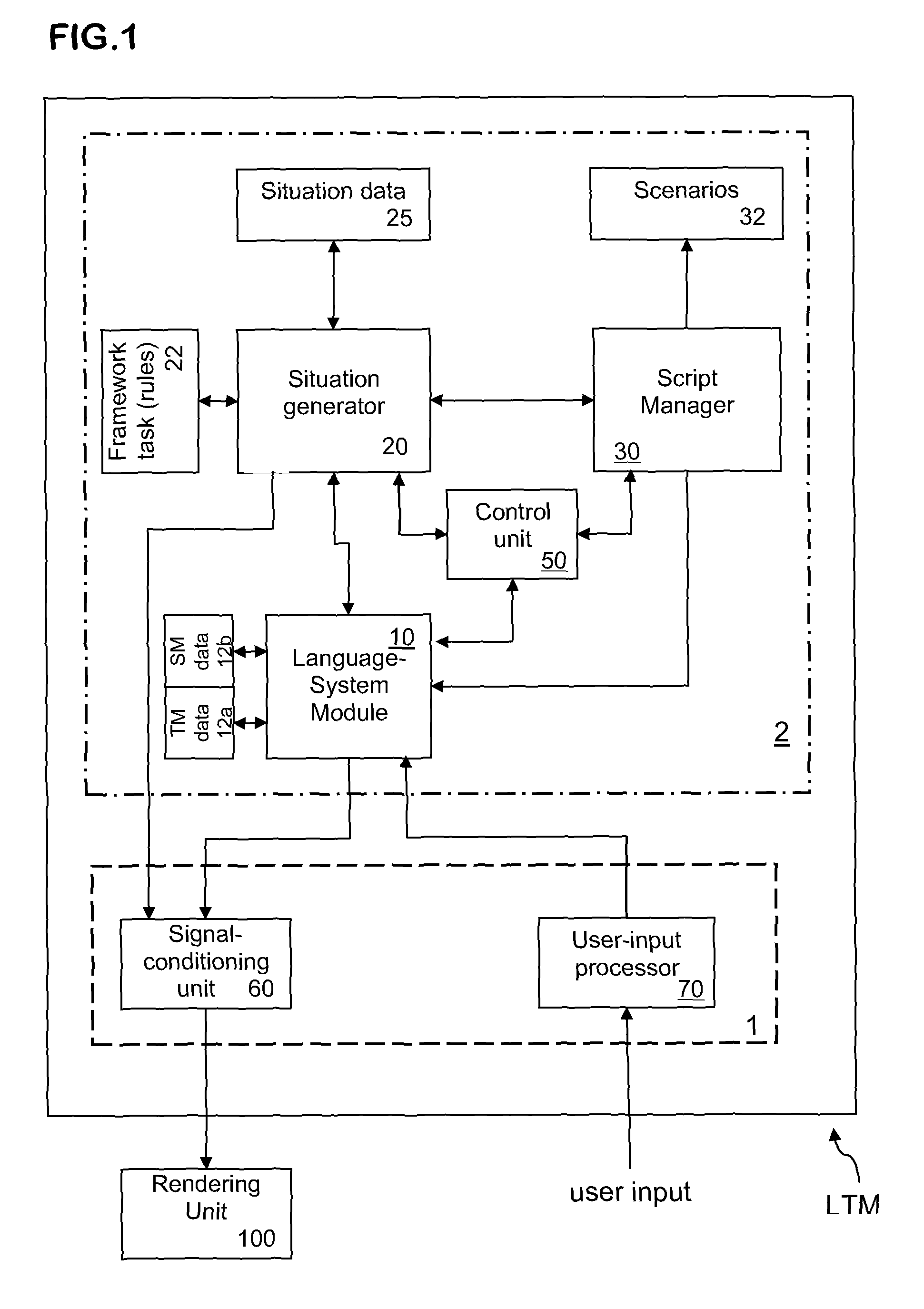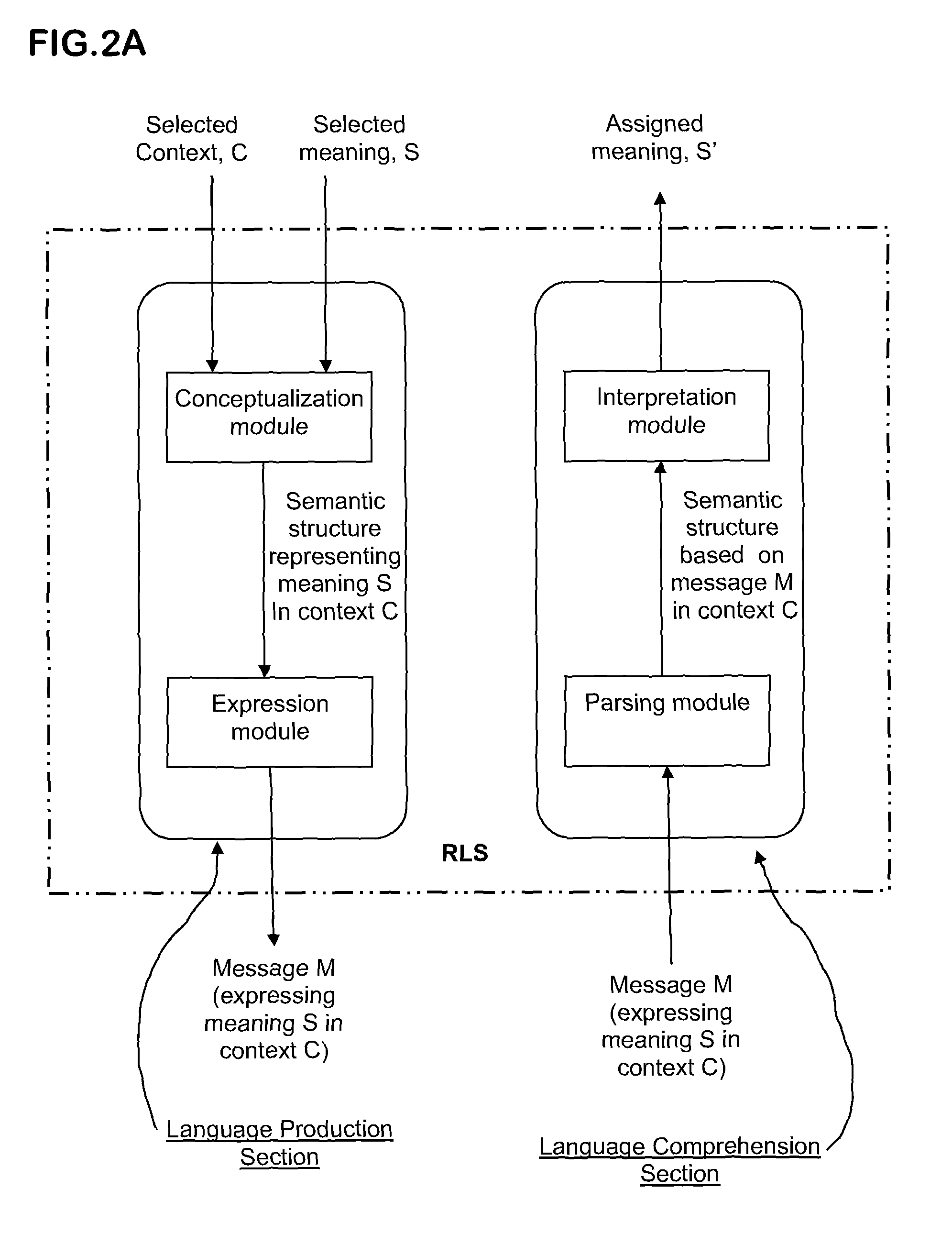Language-tutoring machine and method
a tutor machine and language technology, applied in the field of language tutoring machines and methods, can solve the problems of not being particularly congenial to use, not providing personalized, open-ended learning environments, and a student's learning difficulty, and achieve the effect of maintaining student interest and regulating the complexity of the learning environmen
- Summary
- Abstract
- Description
- Claims
- Application Information
AI Technical Summary
Benefits of technology
Problems solved by technology
Method used
Image
Examples
example 1
Illustrative Example 1
FIG. 22 illustrates one example of certain characteristics of the above-described French-tense tutoring tool when it is configured to teach the future tense. FIG. 22A illustrates a screen view that may be generated for display at the start of an interaction according to the first scenario, in which the user / student must try to understand what is meant by the expression “La boîte tombera”. It will be noted that this interaction re-uses the video clip frames that were used in the interaction illustrated in FIG. 16B—in other words, the same context can be used as the basis for interactions designed to teach different elements of linguistic knowledge.
[0314]FIG. 22B illustrates a part of the task of expressing the meaning of the utterance “La boîte tombera” using FCG, for the interaction illustrated in FIG. 22A:[0315]the top portion of FIG. 22B shows one configuration of an FCG transient coupled-feature structure that the French-tense tutoring tool's expression modu...
example 2
Illustrative Example 2
FIG. 23A illustrates one example of possible attributes of a tutoring machine according to the invention configured to teach the aspect system used in Russian. FIG. 23A illustrates a screen view that may be displayed at the start of an interaction according to the first scenario (human user as student) in which the user / student must try to understand what is meant by the expression “Misha doshagal”. It will be noted that this interaction re-uses the video clip frames that were used in the interaction illustrated in FIGS. 14 and 16A.
[0319]FIG. 23B illustrates part of the processing involved in expressing, using FCG, the meaning of the utterance “Misha doshagal” used in the interaction illustrated in FIG. 23A.[0320]the top portion of FIG. 23B illustrates one configuration of a transient coupled-feature structure that the Russian-aspect tutoring tool's expression module developed (using FCG) during expression of the utterance “Misha doshagal”,[0321]the “applied ru...
PUM
 Login to View More
Login to View More Abstract
Description
Claims
Application Information
 Login to View More
Login to View More - R&D
- Intellectual Property
- Life Sciences
- Materials
- Tech Scout
- Unparalleled Data Quality
- Higher Quality Content
- 60% Fewer Hallucinations
Browse by: Latest US Patents, China's latest patents, Technical Efficacy Thesaurus, Application Domain, Technology Topic, Popular Technical Reports.
© 2025 PatSnap. All rights reserved.Legal|Privacy policy|Modern Slavery Act Transparency Statement|Sitemap|About US| Contact US: help@patsnap.com



